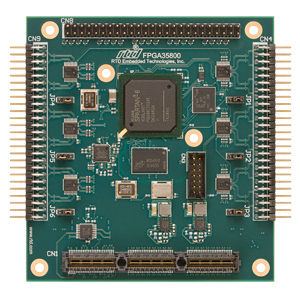Xilinx FPGA RTDS Introduction
In fields like power systems, automotive engineering, and aerospace, Real-Time Digital Simulation (RTDS) is essential for testing and validating complex systems without the risk or cost of real-world trials. But for RTDS to deliver accurate and high-speed results, the underlying technology has to be robust and efficient. This is where Xilinx Field-Programmable Gate Arrays (FPGAs) come into play. Xilinx FPGAs are known for their flexibility, processing power, and ability to handle parallel tasks, making them an ideal solution for RTDS applications.
In this article, we'll explore why Xilinx FPGAs are so valuable in RTDS, the benefits they bring to high-speed simulation, and how different industries leverage this technology to achieve precise, real-time results.
What is Real-Time Digital Simulation (RTDS)?
Real-Time Digital Simulation (RTDS) is a technology that allows engineers to test and simulate real-world systems in a digital environment. The idea is to create a highly accurate model that operates in real-time, meaning it responds instantly to inputs or changes, just like an actual physical system would.
Key Benefits of RTDS:
- Safety: Testing complex systems in a simulated environment removes the risks associated with real-world trials.
- Cost Efficiency: Simulation reduces the need for physical prototypes, saving on costs.
- Speed: Real-time responses mean engineers can test scenarios quickly, optimizing development time.
RTDS is widely used in industries like power systems (for grid stability testing), automotive (for autonomous vehicle testing), and aerospace (for flight control systems), where precision and speed are crucial.

Why Xilinx FPGAs Are Ideal for RTDS
Field-Programmable Gate Arrays (FPGAs) are semiconductor devices that can be programmed after manufacturing, allowing engineers to customize them for specific tasks. Xilinx, a leader in FPGA technology, offers FPGAs with features that make them well-suited for RTDS applications.
Here’s why Xilinx FPGAs are a popular choice for RTDS:
1. High-Speed Processing
RTDS requires fast computation to maintain real-time responses. Xilinx FPGAs are capable of parallel processing, allowing multiple calculations to be carried out simultaneously. This makes them significantly faster than conventional processors for tasks that demand real-time feedback.
- Example: In a power grid simulation, an FPGA can process complex power flow calculations quickly enough to emulate real-time grid behavior, which is crucial for testing stability and fault responses.
2. Low Latency
Latency is the delay between an input and the corresponding response, and in RTDS, keeping latency low is essential. Xilinx FPGAs offer hardware-level processing, which minimizes delays compared to software-based simulations on CPUs or GPUs. This allows RTDS systems to react almost instantaneously to changes in the simulation environment.
- Example: For automotive applications, FPGAs allow real-time simulation of vehicle dynamics. This is essential for autonomous vehicle testing, where rapid decision-making can mean the difference between success and failure.
3. Reconfigurability
Xilinx FPGAs are reprogrammable, meaning they can be adjusted or optimized as system requirements change. This flexibility allows developers to modify RTDS configurations without needing new hardware.
- Example: In aerospace, different control systems might need to be tested under various conditions. FPGAs allow engineers to reconfigure simulations on the fly to test different scenarios, reducing downtime and improving efficiency.
4. Reliability and Determinism
For RTDS applications, it's essential that responses are predictable and reliable. Xilinx FPGAs are deterministic, meaning they process inputs in a highly predictable way without unexpected delays. This is crucial for industries where even a slight miscalculation can lead to system failures.
- Example: In power systems, a misjudgment in the timing of fault detection can lead to cascading failures. FPGAs’ deterministic behavior ensures reliable simulation of such critical events.
Applications of Xilinx FPGAs in RTDS Across Industries
Xilinx FPGAs are used in various industries for RTDS applications, and each one benefits uniquely from the technology. Here’s a look at some specific use cases:
1. Power Systems
In power systems, RTDS is used to simulate grid behavior, test protective relay devices, and study fault conditions. Xilinx FPGAs allow these simulations to run with high precision and at real-time speeds, helping engineers to ensure grid stability and reliability.
- Protective Relay Testing: FPGAs provide real-time fault simulations, enabling engineers to test the response of protective relays accurately.
- Grid Stability Analysis: By simulating different load scenarios, FPGAs help identify potential stability issues in power grids before they arise.
2. Automotive Industry
With the rise of electric and autonomous vehicles, the need for RTDS in automotive development is more critical than ever. Xilinx FPGAs enable real-time vehicle simulations, helping engineers test the performance and safety of control systems under various conditions.
- Autonomous Vehicle Testing: FPGAs simulate complex driving scenarios, including obstacle detection and navigation, to help improve the safety and efficiency of self-driving systems.
- Battery Management Systems: In electric vehicles, FPGAs are used to test battery management systems in real-time, optimizing energy efficiency and extending battery life.
3. Aerospace and Defense
In aerospace, RTDS is used for testing flight control systems, avionics, and navigation equipment. Xilinx FPGAs provide the computational power and reliability needed for these high-stakes simulations.
- Flight Control Testing: FPGAs simulate control surfaces and dynamics of an aircraft, providing real-time feedback that helps validate system reliability.
- Radar and Navigation Simulation: For defense applications, FPGAs simulate radar signals and navigational aids, allowing engineers to test performance under various conditions.
Advantages of Using Xilinx FPGAs Over Traditional Processors in RTDS
Xilinx FPGAs offer several advantages over traditional processors (CPUs and GPUs) for RTDS applications:
- Parallel Processing: Unlike CPUs, FPGAs handle multiple tasks simultaneously, making them much faster for specific RTDS tasks.
- Energy Efficiency: FPGAs consume less power than GPUs, which is a critical advantage for embedded applications.
- Long Product Life Cycle: Xilinx FPGAs are known for their longevity, making them a stable choice for industries with extended product development cycles.
Challenges and Considerations
While Xilinx FPGAs offer many benefits for RTDS, they also come with a few challenges:
- Complexity in Programming: FPGA development requires specialized knowledge of hardware description languages (HDLs) like VHDL or Verilog, which can be a barrier for teams without experience in hardware design.
- Higher Initial Cost: FPGAs are generally more expensive than traditional processors, though their long-term benefits often justify the investment.
- Development Time: FPGA design and testing can be time-consuming, which might slow down the development process initially.
Future Trends in FPGA-Based RTDS
As industries continue to demand faster and more accurate simulations, the role of FPGAs in RTDS is only expected to grow. Future advancements may include:
- AI and Machine Learning Integration: Xilinx is already incorporating AI capabilities into its FPGAs. Integrating AI with RTDS could enable even more intelligent and adaptive simulations.
- Improved Development Tools: As FPGA technology becomes more mainstream, tools are evolving to make development easier, reducing the barrier to entry.
- 5G and IoT Applications: With 5G and IoT, the demand for real-time simulation will increase, especially in areas like remote monitoring and control. FPGAs will play a key role in enabling real-time communication and processing in these applications.
Wrapping Up
Xilinx FPGAs have become an indispensable tool in Real-Time Digital Simulation, offering the speed, flexibility, and precision needed to handle complex, high-speed applications across various industries. From power systems to automotive testing and aerospace, FPGAs are transforming how engineers approach testing and validation, making real-time simulation more accessible and accurate than ever.
Whether you’re developing autonomous vehicles, optimizing power grids, or testing flight systems, Xilinx FPGAs offer the high-performance edge you need for reliable and efficient RTDS applications.
Looking to integrate FPGA technology into your RTDS setup? Consider Xilinx as a powerful partner in achieving real-time, high-accuracy simulations that can keep up with the demands of modern engineering.
FAQs
Why are FPGAs better than GPUs for RTDS?
- FPGAs provide lower latency and deterministic behavior, making them better suited for real-time applications where every millisecond counts.
Are Xilinx FPGAs difficult to program?
- Yes, FPGA programming can be complex and often requires knowledge of HDLs, but new development tools are making it easier.
What industries benefit the most from Xilinx FPGAs in RTDS?
- Power systems, automotive, and aerospace industries benefit greatly due to the need for precise, high-speed simulations in these fields.
